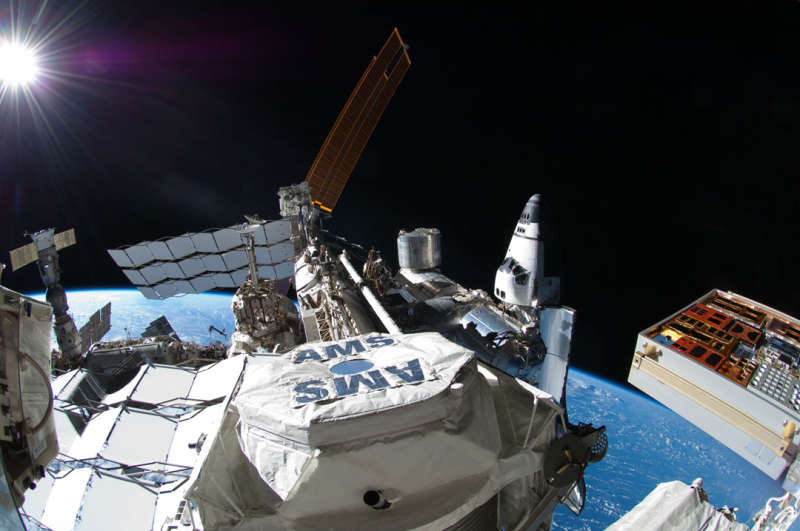Space Station Detector Finds Unexplained Positron Excess

Explanation:
Where did all these high energy positrons come from?
The
Alpha Magnetic Spectrometer (AMS-02) onboard
the
International Space Station (ISS)
has been meticulously recording how often it is struck by both high energy electrons
and
positrons since 2011.
After accumulating years of data, it has now become clear
that there are significantly more positrons than
electrons
at the highest energies detected.
The
excess may have a very exciting and profound origin -- the annihilation of distant
but previously undetected
dark matter particles.
However, it is also possible that astronomical sources such as
pulsars
are creating the
unexplained discrepancy.
The topic remains a very active area of research.
Pictured here, the
AMS is visible on the ISS just after being installed, with a US
Space Shuttle docked on the far right, a Russian
Soyuz capsule docked on the far left, and the
blue Earth that houses all nations visible across the
background.
Follow APOD on:
Facebook,
Google Plus,
or
Twitter
Authors & editors:
Robert Nemiroff
(MTU) &
Jerry Bonnell
(USRA)
NASA Web Site Statements, Warnings,
and Disclaimers
NASA Official: Jay Norris.
Specific
rights apply.
A service of:
LHEA at
NASA /
GSFC
& Michigan Tech. U.

